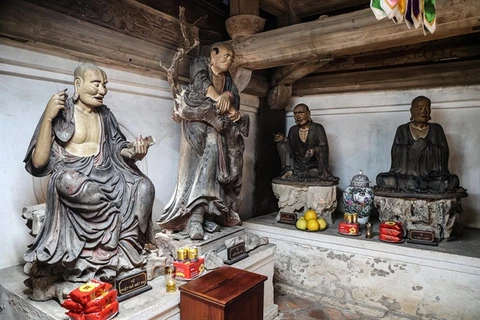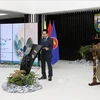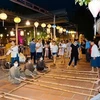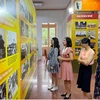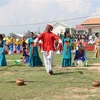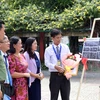 Tay Phuong Pagoda is home to many masterpieces of Vietnamese Buddhist sculptures of the 18th century which are in poor condition. (Photo: VNA)
Tay Phuong Pagoda is home to many masterpieces of Vietnamese Buddhist sculptures of the 18th century which are in poor condition. (Photo: VNA)The capital city has the largest number of national special relics, 21 out of 123 in total. The centuries-old relics, some of which were built thousands years ago, require urgent and special treatment to prolong their lifespan.
Tay Phuong Pagoda, located in Thach That district on the outskirt of Hanoi, is one of the city’s most popular cultural and historic sites. The pagoda has been severely degraded over time and facing the risk of collapse, which could damage the centuries-old statues inside.
It is a combination of three pagodas Ha, Trung and Thuong, all built in the 17th century. It is home to many masterpieces of Vietnamese Buddhist sculptures of the 18th century.
After many years without restoration or proper care, the pagoda's main features have deteriorated. At the Trung and Thuong pagodas columns and pillars have termite damage while part of Ha Pagoda's tile roofs have skewed and leaks when it rains.
The entrance's laterite stone to the temple was broken, making it a trip hazard for visitors. Many ancient statues have flaking paint or broken bases.
The problems will get worse if there are no actions to be taken. Given that the pagoda’s protection zone lies within a decades-old residential area, it is urgent to make plans for the relocation of the residents to provide sufficient space for the preservation and restoration works, said Nguyen Truong Giang, head of the district’s culture and information division.
Many other relics in Hanoi are also in the same situation. However, several issues are standing in the way of the restoration efforts in the city. In many cases, a lack of expertise in restoration and preservation has led to irreparable damages to relics and loss of authenticity.
Le Xuan Kieu, Director of the Van Mieu – Quoc Tu Giam Centre for Cultural and Scientific Activities, said the biggest obstacles to restoring a relic remain in the shortcomings of the Law on Planning and lack of funding. He called on regulators to address legal issues hindering the development of plans for a restoration project.
In response to that, Vice Chairman of the municipal People's Committee Chu Xuan Dung ordered the municipal Department of Culture and Sports to issue instructions for properly planning restoration projects and how they should be submitted to the Ministry of Culture, Sports and Tourism for verification and approval.
The department must also strengthen coordination with concerned units and local administrations to intensify inspection and monitoring of restoration works and prevent unlawful restoration activities, he said.
The capital city's authorities have pledged to boost the public investment plan for 2021 - 2025 by pouring over 14 trillion VND (602 million USD) into restoring and embellishing a total of 579 relic sites in the area.
According to the municipal People's Council, the sum is a significant part of its financial supplementation plans for a five-year term and the allocation for 2022, including investment plans in building and renovating public schools, upgrading the health system, as well as restoring and upgrading heritage sites from 2022 to 2025 and the following years.
According to Dung, the relic restoration was one of the city's three major investment plans for 2021 - 2025.
The city's authorities requested departments, agencies and localities to focus on the plan not merely as construction works, but they should be "cautious" as it contains "cultural and spiritual elements", the official said.
Previously, in 2018, Hanoi spent more than 40.8 billion VND on urgent repairs for 50 monuments./.
VNA



